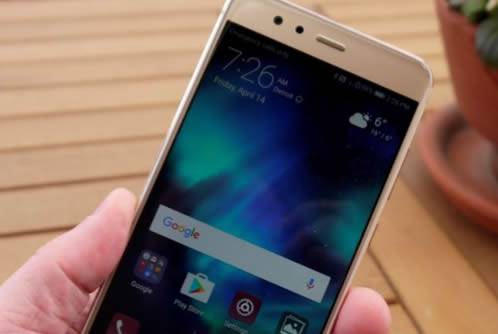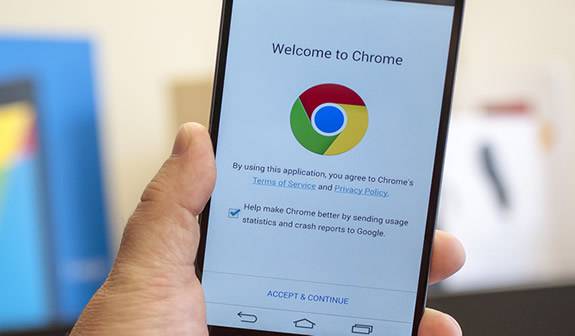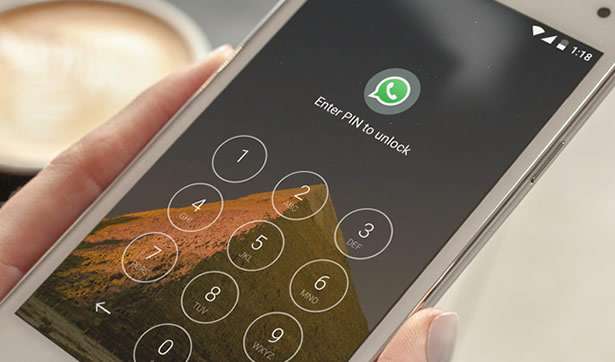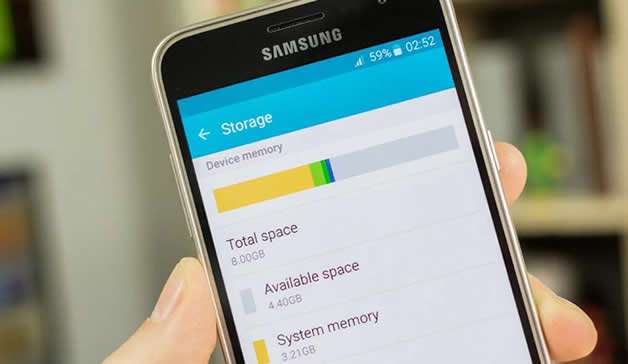No, a factory reset does not remove spyware from an Android device. To properly remove spyware from your Android device, you will need to use specialized anti-spyware software and follow certain steps that may vary depending on the type of spyware present. It is important to note that while some basic spyware can be removed with a factory reset, more advanced forms of malware require special tools and techniques in order to be completely eradicated.
Can spyware survive a factory reset?
How do I remove spyware from my Android phone?
Removing spyware from an Android phone can be a difficult task, but there are steps you can take to protect your device and keep it free of malicious software. To begin with, you should install antivirus protection on your device. This will help detect any malicious applications that may have been installed without your knowledge. Additionally, refrain from downloading apps from unknown sources outside the Google Play Store as these could contain spyware or other forms of malware. Reviewing app permissions before installation is also important in order to identify suspicious behavior and prevent unauthorized access to personal data. Finally, keeping all applications up-to-date by regularly checking for updates can often reduce security risks associated with outdated versions of apps.
Can malware survive a factory reset on Android?
It is possible for malware to survive a factory reset on an Android device, although it is not common. The best way to ensure that malware does not survive a factory reset is to back up your data before the reset and then restore only trusted applications after the reset has been completed. Additionally, users should make sure they are running the latest version of their operating system and regularly scan their device with anti-malware software.
Can an Android be tracked or spied after a factory reset?
Yes, it is possible to track or spy on an Android device after a factory reset. Depending on the type of tracking and/or spying activity being conducted, different methods may be employed. For example, if a user wishes to monitor the movements of their device via GPS location services, they can use a third-party application that offers this functionality. On the other hand, if someone wishes to monitor all communication from their device (e.g., text messages, emails), then more advanced techniques such as installing malware on the device will be necessary in order for monitoring activity to take place successfully. It is important that users are aware of both legal implications and potential security risks when engaging in any type of tracking and/or spying activities with their devices.
Can spyware stay on phone after factory reset?
Yes, it is possible for spyware to remain on a phone after a factory reset. A factory reset will only restore the settings of your device back to its original settings as if it was brand new. It does not remove any underlying malicious software or applications that may have been installed prior to the reset. To ensure that all forms of spyware are removed from your device, you should follow these steps:
1. Run an anti-virus scan on your phone and delete any viruses found;
2. Uninstall any suspicious apps or programs;
3. Make sure that all system updates are installed – this helps close security loopholes which can be exploited by malicious actors;
4. Perform another factory reset and then reinstall only trusted apps from official sources such as Google Play Store or Apple App Store; and
5. Change all passwords associated with accounts linked to the device (e.g., email, social media).
Will a factory reset get rid of a hacker?
No, a factory reset will not get rid of a hacker. A factory reset only restores your device to its original state and does nothing to address any malicious software or activities that may have been installed on the device while it was compromised. To ensure that your system is truly secure, you should take additional steps such as running a full system scan with an antivirus program and changing all passwords associated with the device. Additionally, you should consider consulting an IT professional who can help further investigate the issue and provide guidance on how best to protect against future attacks.
What are the two basic ways of removing spyware?
The two basic ways of removing spyware are by using an anti-spyware program and manually detecting and eliminating any malicious software.
Using Anti-Spyware Program:
1. Install a reputable anti-spyware program on your computer. Make sure the program is fully updated with the latest definitions so that it can detect all known threats.
2. Once installed, run a full system scan to identify any active or dormant threats on your device. This process may take some time depending on your system’s size and speed but it is important to complete in order to ensure the removal of all spyware from your computer or device.
3. After completing the scan, follow instructions provided by the anti-spyware programs to remove any identified threats from your machine and delete them permanently if necessary.
Manually Detecting & Eliminating Malicious Software:
1. Look for suspicious processes running in Task Manager (Windows) or Activity Monitor (Mac). If you see unfamiliar programs running without permission, they could be spyware trying to collect data about you and must be removed immediately before further damage can occur.
2. Delete suspicious files found in applications, user directories or temporary folders on both Windows & Mac systems as these are often associated with malicious activity such as spying or tracking user information without consent . Additionally, look out for strange browser extensions that could be stealing personal data through web browsers like Chrome & Firefox etc., as well as unknown plugins which could also pose a security risk when installed alongside legitimate programs like Adobe Flash Player/Reader etc..
3 Finally , check startup items & services lists regularly for rogue entries that have been added without authorization; these should also be eliminated right away since they will continue to run until disabled/deleted regardless of whether their original purpose has been achieved already or not .
How to detect spyware in Android?
Detecting spyware on an Android device can be a challenge, but there are some steps you can take to help protect yourself. The most important step is to ensure that your device’s operating system and apps are up-to-date. By keeping your software updated, you reduce the risk of spyware entering your device through security vulnerabilities. Additionally, it’s important to only download apps from trusted sources such as the Google Play Store or reliable third party sites. This helps minimize the chances of downloading an app with potential malicious code embedded in it. Lastly, if you suspect that something suspicious has been installed on your phone (e.g., sudden battery drain or unusual behavior), then consider running a mobile antivirus scan for added protection against spyware threats.
{“@context”:”https://schema.org”,”@type”:”FAQPage”,”mainEntity”:[{“@type”:”Question”,”name”:”How do I remove spyware from my Android phone?”,”acceptedAnswer”:{“@type”:”Answer”,”text”:”nnRemoving spyware from an Android phone can be a difficult task, but there are steps you can take to protect your device and keep it free of malicious software. To begin with, you should install antivirus protection on your device. This will help detect any malicious applications that may have been installed without your knowledge. Additionally, refrain from downloading apps from unknown sources outside the Google Play Store as these could contain spyware or other forms of malware. Reviewing app permissions before installation is also important in order to identify suspicious behavior and prevent unauthorized access to personal data. Finally, keeping all applications up-to-date by regularly checking for updates can often reduce security risks associated with outdated versions of apps.”}},{“@type”:”Question”,”name”:”Can malware survive a factory reset on Android?”,”acceptedAnswer”:{“@type”:”Answer”,”text”:”nnIt is possible for malware to survive a factory reset on an Android device, although it is not common. The best way to ensure that malware does not survive a factory reset is to back up your data before the reset and then restore only trusted applications after the reset has been completed. Additionally, users should make sure they are running the latest version of their operating system and regularly scan their device with anti-malware software.”}},{“@type”:”Question”,”name”:”Can an Android be tracked or spied after a factory reset?”,”acceptedAnswer”:{“@type”:”Answer”,”text”:”nnYes, it is possible to track or spy on an Android device after a factory reset. Depending on the type of tracking and/or spying activity being conducted, different methods may be employed. For example, if a user wishes to monitor the movements of their device via GPS location services, they can use a third-party application that offers this functionality. On the other hand, if someone wishes to monitor all communication from their device (e.g., text messages, emails), then more advanced techniques such as installing malware on the device will be necessary in order for monitoring activity to take place successfully. It is important that users are aware of both legal implications and potential security risks when engaging in any type of tracking and/or spying activities with their devices.”}},{“@type”:”Question”,”name”:”Can spyware stay on phone after factory reset?”,”acceptedAnswer”:{“@type”:”Answer”,”text”:”nnYes, it is possible for spyware to remain on a phone after a factory reset. A factory reset will only restore the settings of your device back to its original settings as if it was brand new. It does not remove any underlying malicious software or applications that may have been installed prior to the reset. To ensure that all forms of spyware are removed from your device, you should follow these steps: n1. Run an anti-virus scan on your phone and delete any viruses found; n2. Uninstall any suspicious apps or programs; n3. Make sure that all system updates are installed – this helps close security loopholes which can be exploited by malicious actors; n4. Perform another factory reset and then reinstall only trusted apps from official sources such as Google Play Store or Apple App Store; and n5. Change all passwords associated with accounts linked to the device (e.g., email, social media).”}},{“@type”:”Question”,”name”:”Will a factory reset get rid of a hacker?”,”acceptedAnswer”:{“@type”:”Answer”,”text”:”nnNo, a factory reset will not get rid of a hacker. A factory reset only restores your device to its original state and does nothing to address any malicious software or activities that may have been installed on the device while it was compromised. To ensure that your system is truly secure, you should take additional steps such as running a full system scan with an antivirus program and changing all passwords associated with the device. Additionally, you should consider consulting an IT professional who can help further investigate the issue and provide guidance on how best to protect against future attacks.”}},{“@type”:”Question”,”name”:”What are the two basic ways of removing spyware?”,”acceptedAnswer”:{“@type”:”Answer”,”text”:”nnThe two basic ways of removing spyware are by using an anti-spyware program and manually detecting and eliminating any malicious software. nnUsing Anti-Spyware Program: n1. Install a reputable anti-spyware program on your computer. Make sure the program is fully updated with the latest definitions so that it can detect all known threats. n2. Once installed, run a full system scan to identify any active or dormant threats on your device. This process may take some time depending on your system’s size and speed but it is important to complete in order to ensure the removal of all spyware from your computer or device. n3. After completing the scan, follow instructions provided by the anti-spyware programs to remove any identified threats from your machine and delete them permanently if necessary. nnManually Detecting & Eliminating Malicious Software: n1. Look for suspicious processes running in Task Manager (Windows) or Activity Monitor (Mac). If you see unfamiliar programs running without permission, they could be spyware trying to collect data about you and must be removed immediately before further damage can occur. n2. Delete suspicious files found in applications, user directories or temporary folders on both Windows & Mac systems as these are often associated with malicious activity such as spying or tracking user information without consent . Additionally, look out for strange browser extensions that could be stealing personal data through web browsers like Chrome & Firefox etc., as well as unknown plugins which could also pose a security risk when installed alongside legitimate programs like Adobe Flash Player/Reader etc.. n3 Finally , check startup items & services lists regularly for rogue entries that have been added without authorization; these should also be eliminated right away since they will continue to run until disabled/deleted regardless of whether their original purpose has been achieved already or not .”}},{“@type”:”Question”,”name”:”How to detect spyware in Android?”,”acceptedAnswer”:{“@type”:”Answer”,”text”:”nnDetecting spyware on an Android device can be a challenge, but there are some steps you can take to help protect yourself. The most important step is to ensure that your device’s operating system and apps are up-to-date. By keeping your software updated, you reduce the risk of spyware entering your device through security vulnerabilities. Additionally, itu2019s important to only download apps from trusted sources such as the Google Play Store or reliable third party sites. This helps minimize the chances of downloading an app with potential malicious code embedded in it. Lastly, if you suspect that something suspicious has been installed on your phone (e.g., sudden battery drain or unusual behavior), then consider running a mobile antivirus scan for added protection against spyware threats.”}}]}







